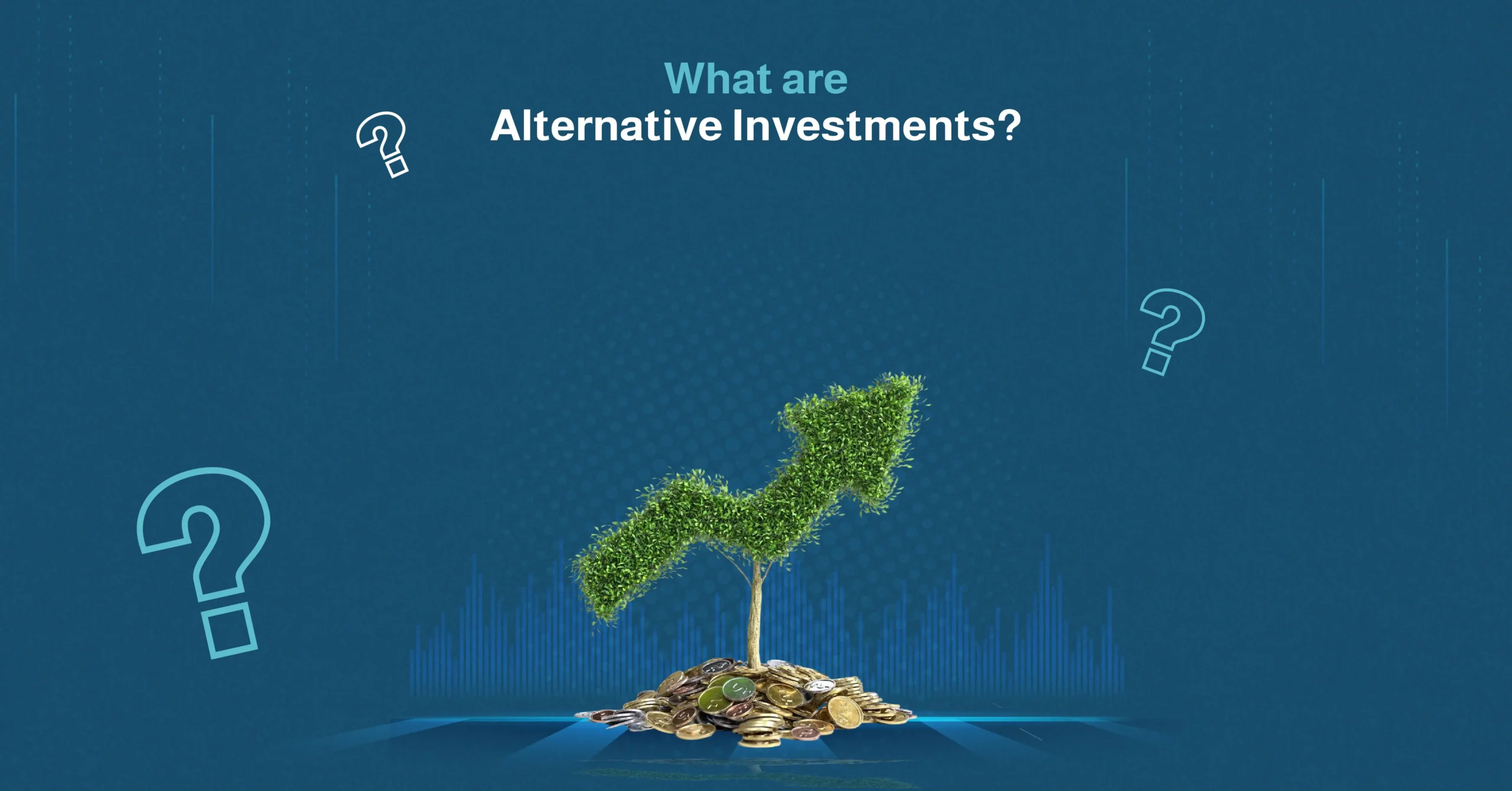If you’ve ever wondered what alternative investments are and how they differ from traditional options like stocks and bonds, you’re not alone. With 2026 right around the corner, more investors are looking for ways to diversify their portfolios, protect against volatility, and tap into opportunities that don’t move in lockstep with the stock market.
Alternative investments cover a wide range of assets, including real estate, private equity, commodities, and even collectibles like art or rare wine. They’re often considered “non-traditional” because they behave differently from stocks and bonds, offering unique benefits but also unique risks. For beginner and intermediate investors, understanding these options can open the door to smarter diversification and potentially higher returns.
In this guide, we’ll break down exactly what alternative investments are, the main types you should know, their advantages and drawbacks, and how they can fit into a balanced portfolio.
You can start investing now from the Gamma Asset Investment Platform
Understanding Alternative Investments
Before deciding if they belong in your portfolio, it helps to start with the basics: what are alternative investments ? In simple terms, these are assets that don’t fall into the usual categories of stocks, bonds, or cash. They include real estate, commodities, private equity, hedge funds, infrastructure, and even collectibles like art, wine, or rare cars.
The main reason investors turn to alternatives is that they behave differently from traditional markets. For example, while stock prices may swing with global economic news, the value of farmland or a private equity fund might move independently. This low correlation can help reduce risk when building a diversified portfolio.
To break it down, alternative investments often share a few key traits:
- Illiquidity – Many alternatives, like real estate or private equity, can’t be sold quickly.
- Higher minimums – They sometimes require larger amounts of capital to get started.
- Complexity – They often need deeper research to understand fully.
- Potential for higher returns – Because of their structure, they can offer rewards that outpace traditional investments.
By understanding these characteristics, you can start to see where alternatives may (or may not) fit into your overall investment strategy.
Types of Alternative Investments You Should Know
When people ask what are alternative investments, the easiest way to explain them is by looking at the main categories. While there are dozens of options, a few stand out as the most common and accessible for individual investors.
-
Real Estate
Property remains one of the most popular alternatives. Investors can buy residential or commercial buildings, land, or invest through real estate funds. Real estate provides rental income and potential price appreciation, but it also comes with maintenance costs and market risks.
-
Private Equity
This involves investing in companies that aren’t listed on public stock exchanges. Private equity can deliver high returns, but it usually requires locking in money for several years and accepting higher risks.
-
Commodities
Commodities include physical goods like gold, oil, and agricultural products. They’re often used as a hedge against inflation because their prices don’t always follow stock market trends. However, they can be volatile and influenced by global events.
-
Hedge Funds
Hedge funds pool money from investors and use a wide range of strategies, including short selling or derivatives. They aim for high returns but usually require high minimum investments and carry significant risks.
4. Collectibles
Art, rare wine, vintage cars, or even sports memorabilia can be treated as investments. Their value depends on rarity and demand, making them unpredictable but sometimes highly rewarding.
By knowing the main types of alternative investments, you can start to see which ones might fit your goals, risk tolerance, and level of involvement. Each comes with its own balance of opportunity and challenge, which is why research is essential before committing money.
Benefits and Risks of Alternative Investments
Every investment has two sides: the potential benefits and the possible downsides. Alternative assets are no different. They can bring balance and opportunity to a portfolio, but they also carry challenges that investors should weigh carefully.
Benefits of Alternative Investments
- Diversification
Alternatives often move independently of stocks and bonds. Adding them to your portfolio can reduce overall volatility. - Potential for Higher Returns
Private equity or hedge funds, for example, can deliver returns that outperform traditional markets, especially over the long term. - Inflation Protection
Assets like real estate and commodities often hold or increase their value when inflation rises, offering a natural hedge. - Access to Unique Opportunities
Investing in farmland, renewable energy projects, or art can give you exposure to markets that traditional investments don’t cover.
Risks of Alternative Investments
- Illiquidity
Many alternatives can’t be sold quickly. Private equity or property may tie up your money for years. - Complexity
Understanding these investments often requires deeper research and expertise, making them less accessible to beginners. - Higher Costs
Alternatives often come with management fees, legal costs, or transaction expenses that eat into returns. - Market Uncertainty
Commodities can swing wildly based on global supply and demand, while collectibles depend heavily on taste and trends.
Finding the Balance
The real value of alternative investments isn’t in avoiding risk altogether but in managing it. When chosen carefully, they can complement traditional assets and make a portfolio more resilient.
How to Include Alternatives in Your Portfolio
Imagine you already have a portfolio built on the usual mix of stocks and bonds. It gives you growth potential and some stability, but you want extra protection against volatility or inflation. This is where alternatives can play a role. The question isn’t just what are alternative investments, but how to use them in a way that complements what you already own.
| Strategy | How It Helps | Example |
| Start Small | Gain exposure without taking on too much risk | Allocate 5–10% of your portfolio to alternatives |
| Match Investments to Goals | Ensure alternatives serve a clear purpose | Real estate for income, private equity for growth, commodities for inflation hedge |
| Diversify Within Alternatives | Reduce risk by spreading across different categories | Mix of real estate, commodities, and collectibles |
| Be Mindful of Liquidity | Keep funds available for short-term needs | Balance illiquid assets like property with liquid ones like gold ETFs |
| Seek Professional Guidance | Navigate complexity and avoid common mistakes | Use advisors or trusted investment platforms |
Approach alternative investments with a clear plan, and you can add them to your portfolio in a way that strengthens rather than complicates your overall strategy.
Leveraging Platforms for Smarter Investment Choices
One of the challenges with alternatives is that they’re not as straightforward as buying stocks online. Researching opportunities, understanding risks, and keeping track of performance can feel overwhelming without the right support. This is where investment platforms and professional resources can make a real difference.
Why Platforms Matter
- Access to Opportunities – Many alternative assets, such as private equity or specialized real estate, aren’t easily available to individual investors. Platforms help bridge that gap.
- Transparency – Good platforms provide clear data on performance, risks, and fees, which helps cut through the uncertainty often associated with alternatives.
- Ease of Management – Tracking different assets in one place makes it easier to see how alternatives fit into your overall portfolio.
The Role of Gamma Assets
Among these resources, Gamma Assets stands out for focusing on real-world, asset-backed investments. Instead of speculation, it gives investors access to tangible opportunities designed to complement traditional and alternative holdings. By prioritizing transparency and real assets, platforms like Gamma Assets help investors make decisions with greater confidence.
Building Confidence Through Tools
The key takeaway is that platforms aren’t a shortcut, they’re a support system. They provide structure, insights, and access that would be difficult to achieve alone. When combined with your own research and clear investment goals, they make alternatives more approachable and manageable.
Is Alternative Investment Right for You?
Alternative investments can be a valuable addition to a portfolio, but they’re not a one-size-fits-all solution. They come with unique risks, longer timelines, and the need for more hands-on evaluation compared to traditional assets. That said, the potential for diversification, inflation protection, and attractive returns makes them worth serious consideration for investors looking beyond the usual paths.
The best way to approach alternatives is with balance. Start small, learn as you go, and align your choices with your financial goals and risk tolerance. Explore different options, from real estate and private equity to commodities or asset-backed opportunities, while keeping your core portfolio stable.
For many investors, working with platforms and advisors can help simplify the process, offering access, transparency, and reassurance. By combining professional support with your own due diligence, you’ll be better positioned to take advantage of opportunities that fit your strategy.
More topics can be read on the Gamma blog
FAQs
Are alternative investments suitable for beginners?
Yes, but with caution. Beginners can explore simpler alternatives like real estate investment trusts (REITs), gold, or index-linked commodities before moving into more complex assets such as private equity or hedge funds. Starting small and focusing on accessible, transparent options is often the best approach.
What is the difference between traditional and alternative investments?
Traditional investments are typically stocks, bonds, and cash. They’re more liquid, widely accessible, and heavily regulated. Alternative investments, on the other hand, include real estate, private equity, commodities, and collectibles. These often require more capital, have less liquidity, and may carry higher risk, but they can also deliver strong diversification benefits.
Can alternatives improve portfolio returns?
They can, but it depends on the asset chosen and the investor’s strategy. Alternatives like real estate or private credit may provide steady income, while commodities can hedge against inflation. Higher-risk options such as venture capital or private equity may boost returns but require patience and tolerance for volatility. Used wisely, alternatives can enhance both returns and resilience in a portfolio.













